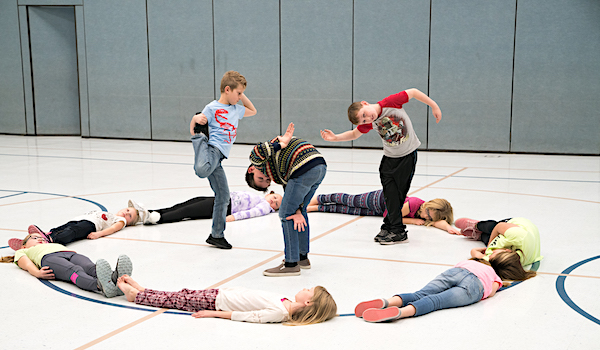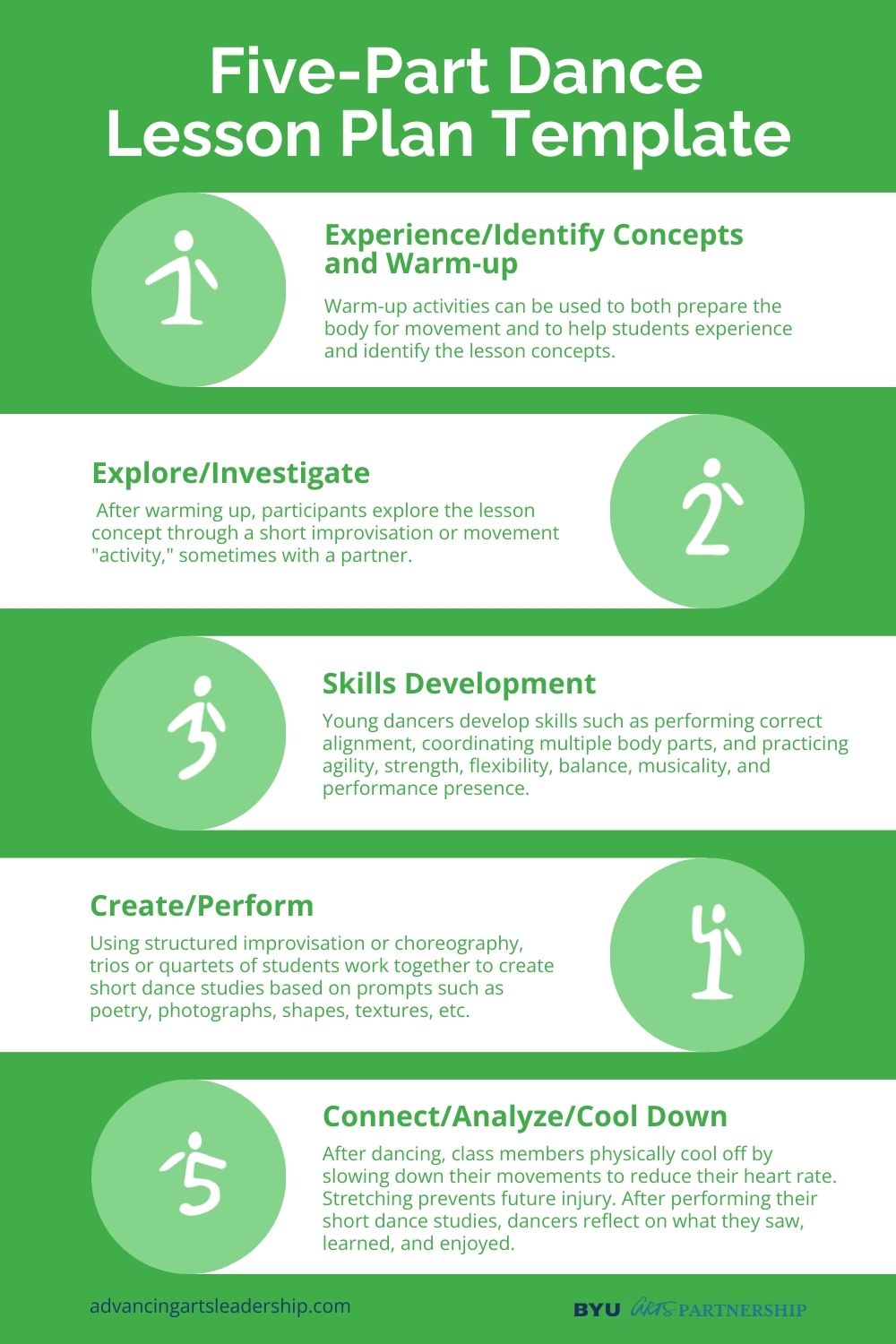How to Create a Dance Lesson Plan

Dance is the most underused art form in elementary classrooms, but it remains an essential first step in preparing the brain to learn. Teachers are often intimidated by teaching movement in the classroom, but we are here to break it down for you! Here, we show you how to create a dance lesson using a five-part lesson plan framework.
The primary goals of dance instruction are:
- to strengthen the body, brain, and balance system;
- to explore creative movement;
- to lower stress;
- and to have fun while creating community.
Each dance lesson is structured around a new dance concept, such as level, pathway, speed, or energy. This concept is integrated throughout a five-part lesson plan, which we will outline in detail below.
The Five-Part Dance Lesson Plan
1. Experience/Identify Concepts and Warm-up
Body warm-ups (not stretching) are crucial for safely readying the body for strengthening bones, lengthening muscles, and challenging the vestibular system (spinning). These warm-up activities can be used to both prepare the body for movement and to help students experience and identify the lesson concepts.
Benefits: energizes, focuses and strengthens the brain; warms the body; and integrates primary reflexes.
2. Explore/Investigate
After warming up, participants explore the lesson concept through a short improvisation or movement "activity," sometimes with a partner.
Benefits: understanding and embodying dance vocabulary and concepts; connecting the body and brain through problem solving; relating to others.
3. Skills Development
Young dancers develop skills, including understanding and performing correct alignment, coordinating multiple body parts, and practicing agility, strength, flexibility, balance, musicality, and performance presence. In this portion of the class, students work to improve their turning, leaping, sliding, galloping, or skipping skills, along with other combinations of locomotor steps, as their ability improves. Participants might also develop the ability to perform structured dance sequences such as folk dances.
Benefits: assists in the development of memorization, musicality, coordination, agility, balance, strength, and endurance while creating community and connecting to culture.
4. Create/Perform
Using structured improvisation or choreography, trios or quartets of students work together to create short dance studies based on prompts such as poetry, photographs, shapes, textures, etc.
Benefits: developing creative and collaborative skills; developing critical-thinking skills.
5. Connect/Analyze/Cool Down
After dancing, class members physically cool off by slowing down their movements to reduce their heart rate. Stretching prevents future injury. After performing their short dance studies, dancers reflect on what they saw, learned, and enjoyed. The class ends with a short closure circle, during which the students review the lesson concept, thank each other, and recognize the accompanist (if applicable).
Benefits: developing observation skills; gaining confidence in performing.
Designing Dance Lesson Plan Resources
Check out Anne Green Gilbert's book Creative Dance for All Ages for examples and to learn more about this five-step lesson plan format for dance experiences.
Check out the bank of dance-integrated lesson plans on our website for ready-made lessons or this blog article about designing integrated dance lessons on core standards.







